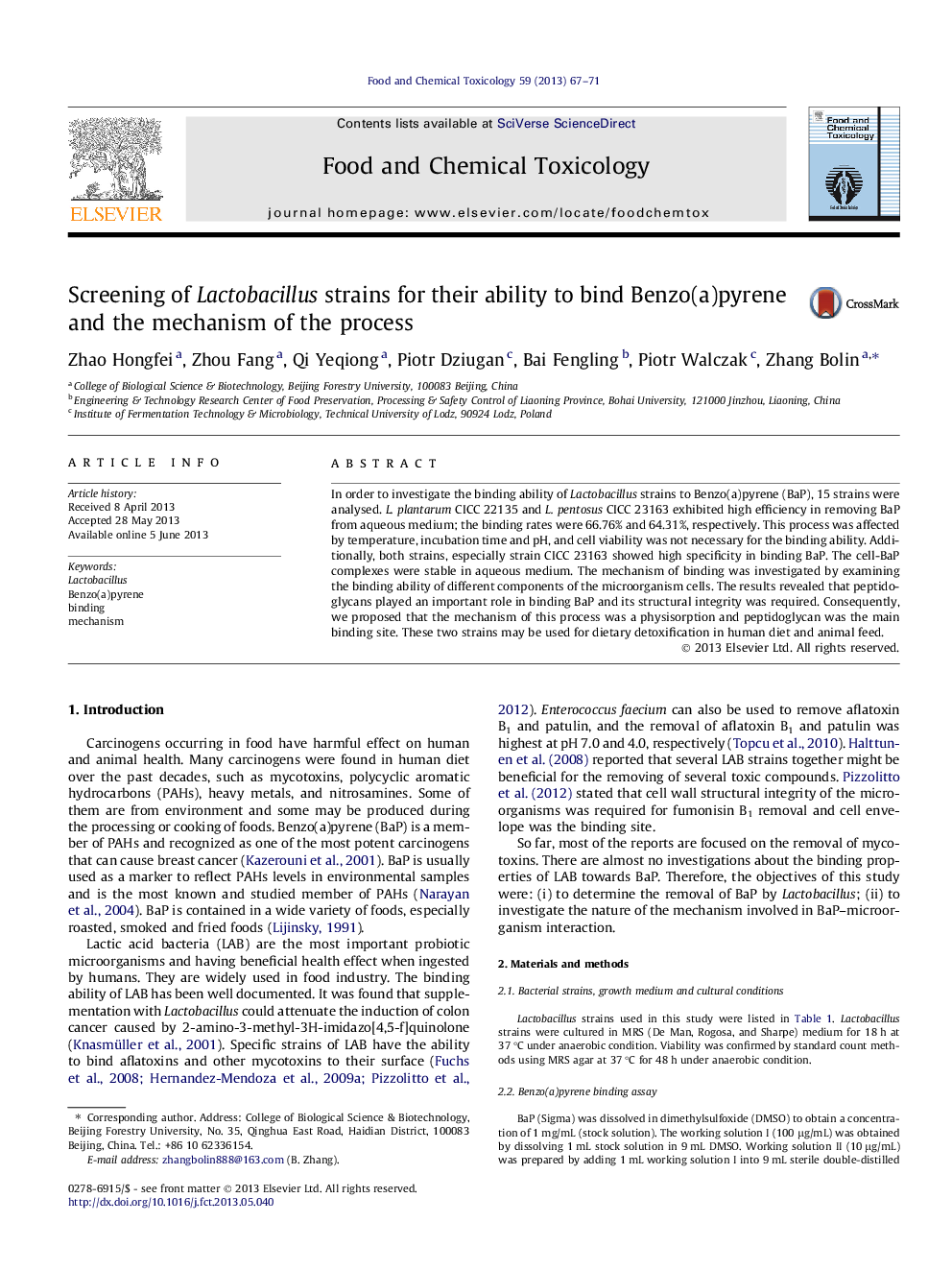| Article ID | Journal | Published Year | Pages | File Type |
|---|---|---|---|---|
| 5850989 | Food and Chemical Toxicology | 2013 | 5 Pages |
Abstract
In order to investigate the binding ability of Lactobacillus strains to Benzo(a)pyrene (BaP), 15 strains were analysed. L. plantarum CICC 22135 and L. pentosus CICC 23163 exhibited high efficiency in removing BaP from aqueous medium; the binding rates were 66.76% and 64.31%, respectively. This process was affected by temperature, incubation time and pH, and cell viability was not necessary for the binding ability. Additionally, both strains, especially strain CICC 23163 showed high specificity in binding BaP. The cell-BaP complexes were stable in aqueous medium. The mechanism of binding was investigated by examining the binding ability of different components of the microorganism cells. The results revealed that peptidoglycans played an important role in binding BaP and its structural integrity was required. Consequently, we proposed that the mechanism of this process was a physisorption and peptidoglycan was the main binding site. These two strains may be used for dietary detoxification in human diet and animal feed.
Related Topics
Life Sciences
Agricultural and Biological Sciences
Food Science
Authors
Zhao Hongfei, Zhou Fang, Qi Yeqiong, Piotr Dziugan, Bai Fengling, Piotr Walczak, Zhang Bolin,
